#structural film
Photo



An Algorithm (1977), dir. Bette Gordon
56 notes
·
View notes
Text
Me: [sees everyone talking about how Assad Zaman was "literally" coming up with RPF about himself and Eric Bogosian in an interview]
Me: ah, fandom's doing its little "interpret an innocent comment in Some Kind Of Way" thing again, let's go find the video and do our own critical thinking about what was actually said here--
Assad: What would happen if I said-- [words that cannot be interpreted as anything but RPF fanfic]
Me:
Me: ok fandom gets a pass on this one actually
#interview with the vampire#devil's minion#assad zaman#he's just hit that level of devil's minion brainrot#i've seen it a thousand times#this cast is fully unhinged and I ADORE them#the chaos energy is off the charts#eric out here setting a bad example with his “did u know u can say anything u want in interviews actually :)))” energy#assad seems one step away from getting Marxist about it like#“if rolin doesn't let me kiss daniel in s3 we must Seize The Means Of Production”#baby boy listen... be the change you want to see in the world#if u wanna write ur own devil's minion fanfic and film it on ur iphone i support u 100% and i will get u in contact with the OTW's lawyers#who ironically were invented partially BECAUSE of people getting in trouble for writing Anne Rice fanfic#this is what we call Plot Structure#real life does not usually have such a satisfying Plot Structure but it could in this case if assad reaches level 100 in Unhingery#and tbh i truly don't know that I would put it past him at this point#iwtv
1K notes
·
View notes
Text


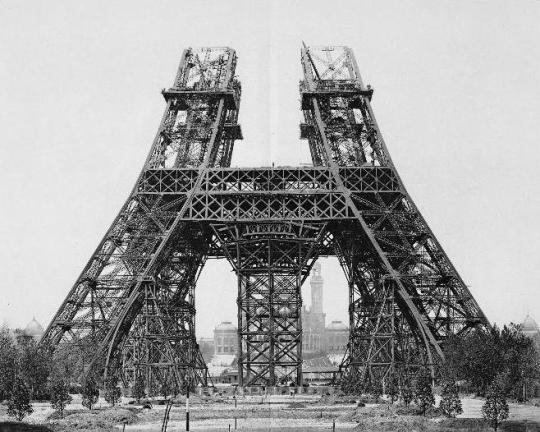

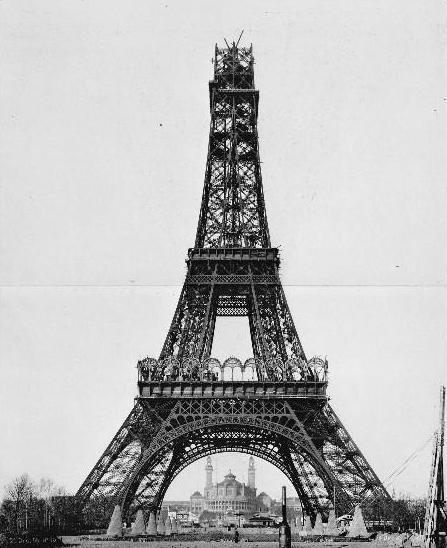

"The construction of the Eiffel Tower"
1889
#eiffel tower#paris#france#1800s#late 1800s#19th century#late 19th century#old photos#history#historical#glamour#aesthetics#aesthetic#vibe#tumblr#structure#old#movie#film#photo#photographs#photography#retro#vintage#timeless#retro lens#timeless tales
261 notes
·
View notes
Text
I was deep in my drunk feelings when I made a joke post threatening to write about episode 5 symbolism and mizu, but then enough people said "where is the essay" so I am here to ramble as requested
in ep 5, the tale told in the puppet show spliced with the flashback sequence of mizu’s marriage identifies mizu as not only the ronin, but also the bride and, with tragedy, the onryō. I would argue that mizu is also depicted (in a less linear fashion) as the phoenix itself, and will circle back to this thought later
mizu is first presented as the ronin, the warrior with a singular purpose. as the ronin’s lord is assassinated by the rival clan, mizu’s mother is killed in the house fire. the ronin swears his revenge, and dedicates his life to this cause. through his childhood and into his young adult life when he departs from swordfather, mizu is exclusively the ronin. he is not the onryō yet, demonstrated in his honorable unwillingness to harm the men who stab him and throw him out of the shop even after he insists that he wasn't looking for a fight in the first place
the ronin is only able to rest and put away his mission when he meets the bride, the lover. however, mizu’s bride is not literally another person she meets. the bride is not mama, or mikio, but the lover mizu discovers in herself, the one allowed to bloom in place of mizu-as-ronin. mizu’s growth into the bride from the ronin occurs over time, but solidifies in the moment when kai is gifted to her by mikio, paralleling the taming of her own distrust and expectations of being hurt. (side note, giving a nod to effective use of color: the bride puppet, dressed in reds and oranges, has matching coloring to the gifting scene, as it takes place in autumn)
mizu’s transformation into the onryō happens in two parts, beginning with the slaying of the bride and completing with the slaying of the ronin. the betrayal by mikio and mama kills the softness in mizu, kills the lover she has allowed herself to become. mizu-as-onryō retaliates by killing the ronin: the part of himself that hesitates before striking, that part that cares for honor. in not intervening in mama’s death and then murdering mikio in turn, mizu kills the ronin in himself, slaughtering it in retribution for the dead bride
mizu is both the bride and the ronin, peaceful lover and noble warrior, until he is not—he is the onryō, only the onryō. episode 5 opens with the narrator saying, “no one man can defeat an army, but one creature can.” only as the onryō, and not as the ronin or the bride, does mizu have the force of will and capacity for violence it takes to singlehandedly overcome boss hamata’s thousand claw army and protect the brothel
mizu’s identity and place in the world is a constant dialogue. he is too white to have a respectable place in japanese society, but is also seen by abijah (our stand-in for white british society) as filthy and corrupted. he is not perceived as enough of a man to walk through life wholly as one (madame kaji’s comments about his apparent lack of sexual desires, his bones breaking “like a woman’s” under fowler’s hands, his disregard for honor and recognition as a samurai). she is also not enough of a woman to exist peacefully as one with mikio (she is a swordsman, an accomplished rider, bad at domesticity; “what woman doesn’t want a husband?” mama chastises)
the moment when mikio rejects her completely following their spar is a particularly poignant narrative beat about tolerance of “the other” in gender presentation: mikio can accept her as a woman only until she bests him at manhood, at the sword, at violence. she is Other in that she is physically strong, a poor cook, able to wield a sword. these traits are all tolerable to mikio, also an outcast, so long as she is not so Other as to be a man. but her swordsmanship bests his, and bests his in the way the sun outshines a candle. it is too Other, and therefore she is not a woman. she is a monster to him, the onryō, even before she kills the bride and the ronin in herself
(( as an aside, this series does a very good job at discussing the oft-challenging relationship between race and gender (e.g. that it is difficult for mizu to live as a biracial man, but would be deadly for her to live as a biracial woman), and demonstrating how queerness of identity complicates that relationship even further—but that’s a topic for a different post ))
as the narrative has been building on this idea that mizu is both the ronin and the bride, the man and the woman, japanese and white, episode 5 concludes with the heartbreaking reveal that, although mizu is all of these things simultaneously, he has had these identities beaten out of him by tragedy and cruelty and his own self-loathing hand
but mizu does not stagnate as the monster. we return to the metaphor of steel: too pure and it becomes brittle, breaking under pressure. mizu is a sword, a weapon that he has forged for the sole purpose of revenge and blood, but he has excised too much of himself to successfully deliver on his goals—he is not the ronin or the bride, he is the onryō; she is not a woman or a man, she is the onryō; the onryō is nothing but pain and vengeance—and so it breaks
“perhaps a demon cannot make steel,” mizu says. “I am a bad artist”
swordfather replies, “an artist gives all they have to the art, the whole. your strengths and deficiencies, your loves and shames. perhaps the people you collected… if you do not invite the whole, the demon takes two chairs, and your art will suffer”
to be reforged, mizu must not only acknowledge the impurities she has beaten out of her blade, out of herself, but lovingly, radically accept them and reincorporate them into the blade, into herself. he adds impure steel—the people he has collected, with their own dualities—to the sheared meteorite sword: the broken blade that fit so perfectly in taigen’s hand (the archetypal ronin, but a man seeking happiness over glory), the knife akemi tried to murder mizu with (the archetypal bride, but with ambition for greatness), the bell given to ringo and returned to mizu in broken trust (the man unable to hold a sword, but upholding samurai principles of honor and wisdom), the tongs that honed mizu’s smithcraft under swordfather’s guidance (the artisan, a blind man who sees more than most). to make of herself a blade strong enough to see her promises through, she must hold her monstrosity and honor and compassion and artistry in equal import
she is the onryō, and the ronin, and the bride, and all the people she has collected.
with this we finally come to mizu as the phoenix. mizu undergoes many cycles of death and rebirth, both in the main storyline and the flashbacks into her life leading up to the present. often, mizu is juxtaposed against literal flames—the burning of his childhood home, swordfather’s forge, the fire as he battles the giant in the infiltrated castle, the heart sutra forge of her own making, the climactic second confrontation with fowler. not every death/rebirth mizu undergoes is thematic to flame, of course. the fight with the four fangs, spliced with the rebirth ceremony of the town, for example, or the deaths of her ronin-self and bride-self, giving rise to the onryō
he is the phoenix, unable to truly die: every fatal combat he pulls back from the brink, reborn over and over in the wake of failure and setback. in episode 1, mizu prays for the gods to “let [him] die.” not to help him to face death unafraid, not to die with honor or victory, but to die at all. mizu has experienced death a thousand times over, but not once has it stuck
(( as a parting aside: the ronin’s rage at the phoenix clan for killing his lord parallels mizu’s self hatred of his mixed heritage (which he believes to be the thing that killed his mother), and so the ronin’s quest for revenge against the phoenix clan is mirrored in mizu’s quest to kill the white part of himself as best he can, by killing the white men who could be his father ))
mizu, the ronin. mizu, the bride. mizu, the onryō. mizu, the phoenix.
#blue eye samurai#mizu blue eye samurai#hopefully this is mostly coherent#I have more things to say but this was getting lengthy#there's also a lot of gender and racial nuance I've glossed over here for an attempt at brevity and structure#god also the COLOR. do you know how much I have to say about the use of color and shadow as a reflection of the narrative#maybe I'll write another damn essay who knows#this show really scratches the part of my brain that was academically trained in film analysis#blue speaks
152 notes
·
View notes
Text
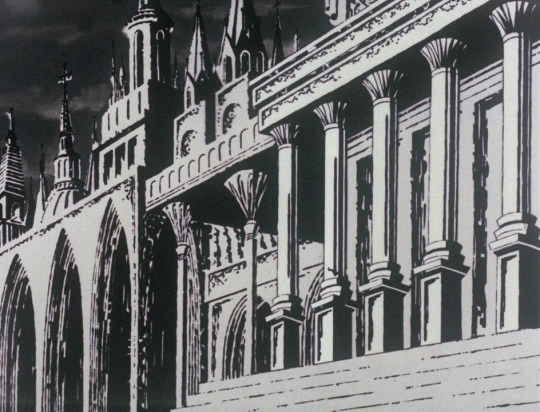



Belladonna of Sadness (1973) Dir. Elichi Yamamoto
#Belladonna of Sadness#Elichi Yamamoto#film#anime#illustrations#black and white#structure#japan#1973
1K notes
·
View notes
Text
Artists who admit to not knowing small details about their characters and worldbuilding have inadvertently given better advice than any character design post on social media tbh. as fun as it is to come up with what your guys would order from a restaurant or the contents of their backpack or their favorite color I've run into very few people who can leave that stuff in a story (or even leave it offscreen as paratext) without it being distracting and poorly written because it's rarely in service of the narrative. a lot of that is def just down to personal taste, but it feels more like designing characters for a TTRPG
#this goes for books comics screenplays whatever#basically anything except roleplay which demands that kind of fine detail bc maybe you ARE ordering from restaurants#as always you can run into the opposite problem too where your characters are empty vessels#but being online and having tried my own hand at a story as a teenager this feels like the more common roadblock#lighthouse is actually a great example of my ideal balance- the characters are deeply human; it feels like the finer details exist somewher#but they're not text- it's clear no one was thinking about their first memory or favorite dog breed#the focus is on structure and image#you can have it all!#books#films
88 notes
·
View notes
Text
See I honestly do find the prequels-era Jedi an interesting (and at times painfully recognizable) portrait of institutional violence in that...they aren't cackling villains. They're mostly sympathetic well-intentioned individuals who via a combo of traditionalist inertia, ideological blinders, proximity to power, a dash of plain old arrogance and a liberal seasoning of end-justifies-the-means compromise end up being at best indifferent to and at worst deeply complicit in some pretty heinous injustice. I don't even think this is a completely against-the-grain reading on my part. At the end of the day it's a pretty mild critique, but it's hard to argue that the PT is entirely uncritical of the Jedi imo.
Unfortunately the narrative is never interested in really sinking its teeth into that. And even more unfortunately, a chunk of the fandom will clutch its pearls in horrified outrage if anybody else is interested in sinking their teeth into that
#i recognize that isn't lucas' reading but (1) the author is dead (2) his is not the sole creative vision at work in those films#and (3) george ''i'm a methodist buddhist benevolent dictatorship is the best form of govt ewoks are my vietnam metaphor'' lucas#says some brain-breakingly stupid shit and i'm under no obligation to accept his takes as gospel#anyway. i don't think you have to hate or lack sympathy for the characters to think that as presented in the pt#the jedi order is sort of a fucked up institution within (and doing the bidding of and dedicated to perpetuating) a deeply fucked up system#fundamentally it's a story about structural failure!!!#the good intentions are what make that failure tragic#star wars#aggressive negotiations#my posts
442 notes
·
View notes
Text
Young Royals and the three act structure, Part one
Seems like there was some potential interest in a full three-act story structure analysis, so I’m taking this opportunity to indulge myself by going full nerd. I’m going to attempt to make the argument that limiting the show to three seasons is actually perfect for Young Royals, by highlighting the pattern the story follows.
A few things to keep in mind before we start.
This analysis is not about the characters deep inner emotional lives. We are not here to pass judgment on their actions. We are simply identifying the beats of the story in a neutral and objective manner, for the purpose of analysing the structure of the story.
As you will notice, the points I have identified are all from Wilhelm’s perspective. That’s because he’s the point-of-view character, the main conflict is shaped by him and his emotional state. He’s the protagonist. Each subplot however, will follow the same pattern and has its own purpose, but I’ll get more into that another time.
I’ll be referring a fair bit to Lindsey Ellis’s video essay on the subject, because I like how she describes the structure pattern in sequences. So I’m gonna borrow some of her language. Also, note that the examples she uses to describe the tree-act structure are all feature films. Since Young Royals is a series, it’s gonna divert slightly from her description. But that’s what is so great about this structure, it’s flexible. It’s not meant to be set rules, but rather guidelines to help keep your story relevant and engaging all the way through. If you find this stuff interesting, I’d highly recommend watching her videos!
The three act structure is absolutely not the only way to tell a story. There’s many different formats that works just as well! It’s really about finding what structure works best to tell your story. The three acts however is the most common format you’ll find in more commercially viable works, such as Disney films for example.
And finally, I’m not a writer, but an animator, and I have studied film theory/structure. I’ll do my best to motivate the plot points I’ve identified, but if you’re a proper story expert and disagree with me, I’m happy to discuss!
Okay, let’s get to it.
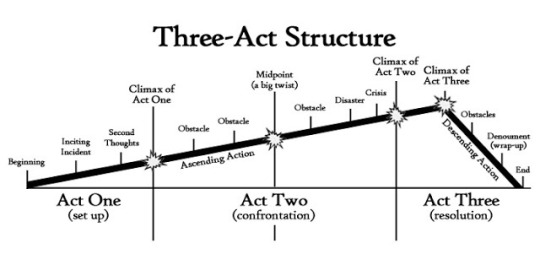
A three-act structure is constructed of just that, three acts, and roughly looks like this. Essentially, a beginning, a middle, and an end. Or the set up, the confrontation, and the resolution. These acts may vary in length, act two usually being the longest and act three usually being the shortest. But what truly defines them is the tension of each act, meaning what drives the conflict forward at that point. A story will have a main conflict yes, but that conflict will take on many forms depending on where we are in the story. Lindsey Ellis describes each act as consisting of multiple sequences, and defines each sequence by its individual tension as well. Though all points of tension should always stay related to the main conflict! So the main points we’re looking to identify in the story are the main act tensions and the main sequence tensions.
Let’s go through season one of Young Royals and talk about each story beat.
Act 1
Act tension - Wille has to attend Hillerska.
Sequence 1
We start with the Set up/Hook. The purpose here is to establish the world and the protagonist along with their internal conflict, such as their flaws and/or desire that makes them feel incomplete - The way Wilhelm’s character is introduced informs us that he is royal, but struggling with his role, because royals have set rules to follow.
“Why can’t I decide how the hell I want to live? I want to live a normal life!”
The thing that sets the story in motion is the point of attack. Something happens that is outside of the protagonist's control/knowledge - That would be the royal court deciding to send Wille to Hillerska without his permission. This gives the protagonist something to react to.
Sequence tension is established - Wille does not want to go to Hillerska. The rest of episode one reinforces Wille’s discomfort at the school.
Next, we get to the inciting incident. An event that disrupts the status quo, and our protagonist has to get involved - The initiation party, particularly when Wille and Simon almost kiss at the end. This leads him to acknowledge his attraction toward Simon and become more proactive in his pursuit of the boy.
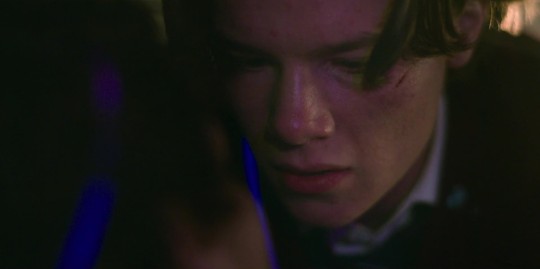
The sequence tension is resolved. Notice how in episode two, Hillerska is no longer the main focus for Wille, but Simon is. The seeds for what will become the central conflict have now been planted. The conflict is usually driven by character motivation. This is where we can consider the protagonist's Want vs Need. The want drives the main tension - Wille wants to be with Simon. But we’ll find want he needs later on in the story.
Sequence 2
The purpose here is to build up the creation of the main tension of the story. The main antagonist can also be established here - August keeps getting on Wille’s nerves. Especially when he’s trying to hang out with Simon.
That’s our sequence tension - Wille is working to befriend Simon, but August keeps getting in the way.
The end of the sequence sees the first major plot point, the Lock-in. Where our protagonist makes a decision that changes everything. Usually, something they can’t come back from - In Young Royals that would be the first kiss. Wille and Simon’s relationship has fundamentally changed. The main tension is now established.

Act 2
Act tension - Can Wille be with Simon, despite him being a prince?
Sequence 3
At the start of this sequence, the protagonist has most likely achieved some kind of milestone or learned something - He’s definitely like that.
To keep the story interesting, writers will add so-called pinch points in between the bigger plot points. These usually act as reminders of the antagonist or the pressure our protagonist may feel - Wille feels he needs to break it off with Simon because a prince is not supposed to be gay. As we established in the set up, royals have rules.
Sequence tension - Can Wille deny his feelings for Simon? Queer pining ensues.
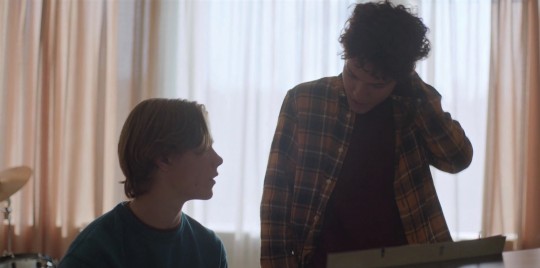
Sequence 4
The purpose of this sequence is to build up towards the midpoint. We see the protagonist making attempts to achieve their goal - The want never changed, Wille still wants to be with Simon, despite the pressure. Wille invites him to spend the weekend with him.
Sequence tension - Wille is trying to prioritise his new relationship with Simon, but August is still being annoying.
Then the midpoint hits. A major disruption, either from a character action or a force of nature. Can be positive or negative, just something that changes the aim of the quest without resolving the main tension - This time it’s literally halfway through the season. End of episode three, Erik dies and Wille becomes the crown prince. Everything has changed.
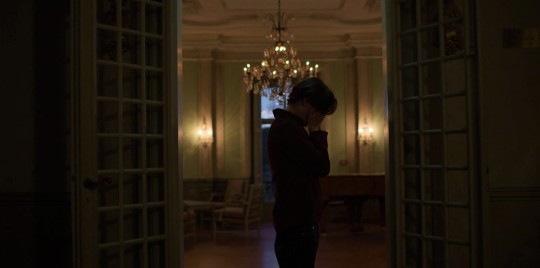
Sequence 5
Everybody has to adjust to the new world order after the midpoint disruption. We’ve reached another pinch point - Again we are reminded that royals have rules, and Wille makes another attempt to follow those rules. By embracing his new role, he breaks up with Simon once again, then sort of pursues Felice and joins the society.
Sequence tension - Wille adjusting to his new title while mourning his brother.
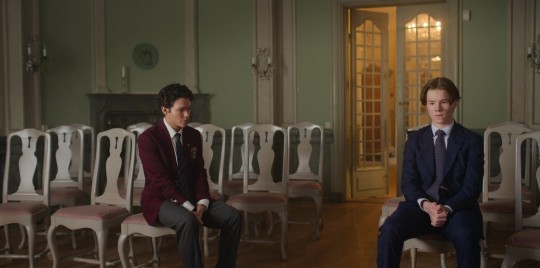
It’s common for subplots to advance around this time - Like Simon giving August the drugs to sell.
Sequence 6
Another plot point, where our protagonist may stop and reflect. Maybe have a heart-to-heart with another character, and perhaps make a decision - This is where we see the football field scene and the end of episode four. Wille reaches out to Simon for help, reconnecting with him. This leads them to pursue a relationship once again. They are put in a false sense of security. They are finally together, thinking all is good. BUT, we in the audience know that August has the video of them and the writers keep reminding us of him and the threat he poses. Even if Wille and Simon don't know it yet.
Sequence tension - Can this happiness last?
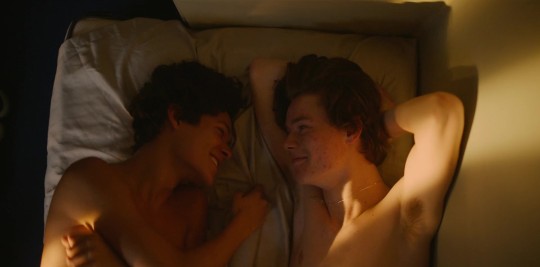
Sequence 7
(Here’s where the story leaves the classic structure for a bit, and adds an extra sequence for some more drama, as filler. In theory, they could have skipped this sequence and gone straight to the video being released. This part is mainly here to give motivation for August’s character, making his actions clearer)
So we are essentially given another pinch point, a reminder of antagonist or pressure - August tries to break them apart by telling Wille about the drugs, which leads to the music room fight.
Sequence tension - August is becoming more hostile.
Wille saving Simon from being framed for the drugs is more related to August’s money subplot. And the Lucia hug scene is mainly there for character building purposes. I’ll talk more about that stuff in part two.
The plot has advanced to the culmination of the main tension. The crisis that serves as build-up to act three - August releases the video. At the end of act two, the protagonist faces their biggest challenge yet. They’ve hit their lowest point - The aftermath of the video's release and Wille is totally lost.
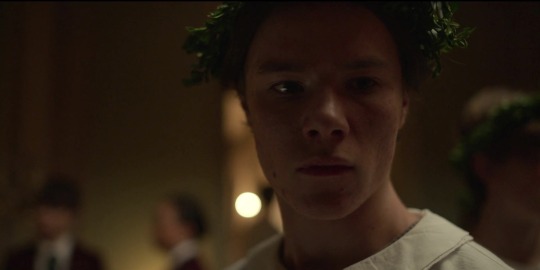
Act 3
Act tension - Can they save their relationship after the video?
Sequence 8
Begins with the protagonist making a big decision that creates the new act tension. The tension in act three will be different, but still related to the main conflict - Wille and Simon talk in the locker room, where Wille says he won’t do the statement.
Sequence tension - Can Wille avoid making the statement?
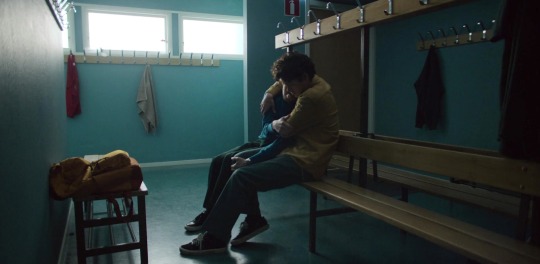
We’ve reached our last major plot point, located at the end of the sequence. Sometimes known as the twist in the third act - And what a twist, Wille does the statement anyway. This narrows down the tension further, to focus on a more character-driven intimate place for the next sequence.
Sequence 9
Sequence tension - Can they be together despite the statement?
Climax, the last big fight - Simon tells Wille off for being selfish and breaks up. Wille also finds out that both August and his mother betrayed him. The protagonist’s need has emerged from this journey and is now clear to us - Wille needs to decide who he wants to be. The want and the need should be different from each other, but still connected. Wille wants Simon, but in order for that to happen, Wille needs to break out of this cycle of self-preservation and stand up for himself against the royal court.
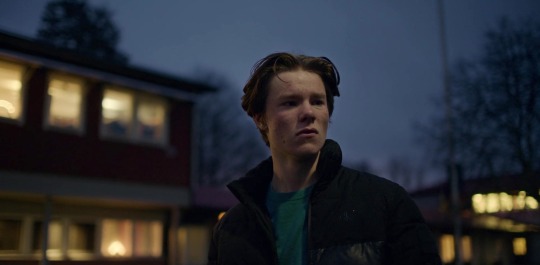
The climax will most likely lead to some kind of character growth - Wille is now pissed because he’s lost everything and realizes how corrupt the royal court is. As Lisa so beautifully put it, “A flame is ignited in him”. Hugging Simon in public is a display of his character growth.
And finally, Resolution. The point where the story is usually wrapped up neatly, but if left ignored, you get a cliffhanger - Which is exactly what happens in this season. Nothing is properly resolved at this point. Resulting in an open ending/cliffhanger.
Oof, that was a lot. How are we all doing? So these are the main beats of the plot. Makes sense? Let me know if you need any further clarification 😅 I was gonna get into how the rest of the show fits this format as well, but that’ll have to be in a separate post. Here’s part two!
#young royals#prince wilhelm#young royals analysis#young royals season 1#film theory#story structure#story analysis#young royals and the three act structure#wilmon#simon eriksson#august horn#my meta#my analysis
247 notes
·
View notes
Text
since we know luke was lonely & bullied on tatooine, here are some important things i think luke skywalker experienced for the first time while living on rebel base
sitting with his friends on a too-small bunk, knee to knee and sharing food
getting ready with the gworls (gn). i genuinely think he didn't realize how much of a process getting ready is
crying of laughter way too late at night, not being able to sleep because everything is funny
he often asks his roommates deep questions at 3 am and gets told to shut up
the idea of platonic intimacy in general
#please note. i hc the rebellion as a barely functioning slapdash military because that's what we get in the films so#if glucas isn't thinking about the military structure. neither am i!#luke skywalker headcanons#luke#eowyn speaks
25 notes
·
View notes
Text

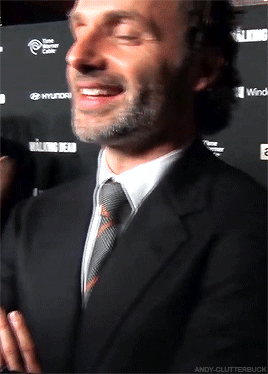




#someone check on the person who filmed this#top right was getting to them#Andrew Lincoln#*#andygifs#put that thing back where it came from or so help me#excuse me but the nose™️#EYE CRINKLES#your bone structure my dude#profile that'd make renaissance sculptors green with envy#michelangelo gonna just throw david in the river and give up#then come haunt me for saying that#blessed by the hair gods tbh#the most beautiful big ol forehead#me: you need other gifs not just the top right one me: FINE I GUESS
183 notes
·
View notes
Photo



An Algorithm (1977), dir. Bette Gordon
20 notes
·
View notes
Text

Public Parking
Glendale, CA
#glendale#public parking#neon#black and white#kodak tri x#canon eos 55#canon elan ii#film#analog#filmisnotdead#ishootfilm#los angeles#la#35mm#street photography#street#architecture#parking structure
21 notes
·
View notes
Text
I find it really annoying how frequently the Hays Code is nebulously evoked in discussions of "puritanism" in media (a term defined here as "whatever the op wants it to mean") without much critical understanding of exactly how directly the Hays Code has indeed informed our contemporary ideas of minority representation and depictions of sexuality in film. It's not just an abstract idea of conservativism, it was a very specific structure of film censorship in the US that materially shaped the fundamentals of the medium as we understand them to this day. Especially when people fearmonger over anyone "bringing back" the Hays Code as if the present MPAA isn't already built off the same ideology! Like... You do not know what you're talking about here lol.
#not that its any surprise that people on the internet Just Say Shit without any critical analysis but like#actually learning abt the structure of film censorship will give you a more holistic understanding of WHY things are depicted certain ways#///
90 notes
·
View notes
Text
Gelatin Hell my beloathed 🤢
#this popped up in on this day on tiktok#and i guess i never uploaded it here since it was a failure! :0#also you can tell i was still figuring out how to structure the videos and film hehehe#i got better at it :3#dungeon cooking tag#dunmeshi#dungeon meshi#delicious in dungeon#man eating plant tart#cooking fail
26 notes
·
View notes
Text
not to beat a dead horse but instagram users need to read up on what the male gaze actually is bc i am at the end of my rope… it’s not “when a man looks at you” or specifically “what men think is hot” its about how men are assumed to be the default subjects and observers while women are the objects being watched, and it was coined in reference to film and visual art rather than real life. the male gaze isn’t a literal man looking at a man woman; acting and looking in a way that appeals to men isn’t “dressing for the male gaze” it’s dressing for men. that’s also why the “female gaze” isn’t a coherent concept bc in a patriarchal society it is always men’s subjectivity which is assumed to be the default
#also films by female directors can still play into the male gaze bc it’s a pervasive societal structure not a literal person#soapbox
34 notes
·
View notes
Text
The Yellowjackets Instagram sharing the drop date for YellowSTONE gave me the worst whiplash of my life. Don’t. Don’t do that. I care immensely about lesbian soccer cannibals and inescapable trauma. I do not care about Costner in a cowboy hat. Don’t play with me that way. In Pride month? How dare you.
#yellowjackets#I just watched a bunch of Chris Fleming videos in a row and I fear it shows in my sentence structure#but all the same: I got irrationally excited for point two seconds and then realized#the OTHER one. the other show beginning with yellow. not even close to the same thing.#me: oh my god a drop date. they literally just started filming but maybe!!!#how could you play me this way#I do like to imagine it’s the same human in charge of both accounts. that’s a hilarious mental image#they just crossed their wires by mistake and now the gays are SO confused
33 notes
·
View notes